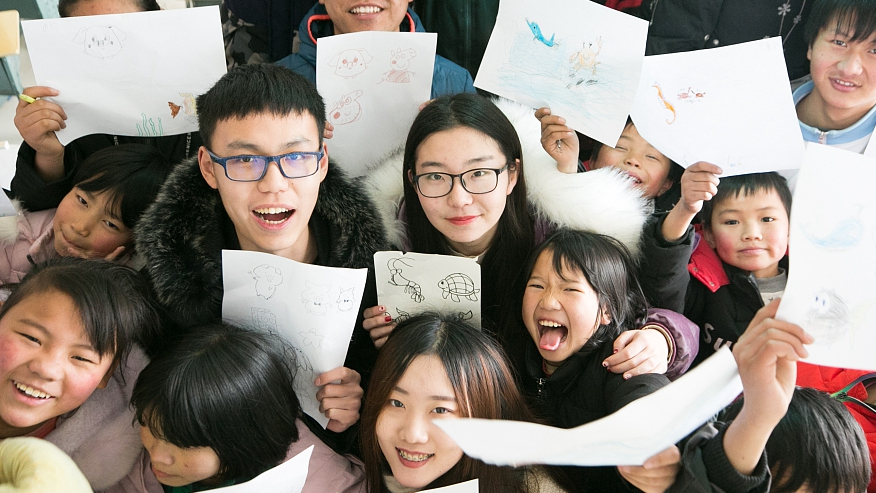
(Photo: CGTN)
China is enhancing its efforts to protect orphaned children and teenagers to ensure they grow up in a safe environment. On January 1 the first regulation surrounding the management of child welfare institutes was put into place.
Before the new regulation was put in place a previous provisional regulation for social welfare institutes, which was issued in 1999, was applied to manage the affairs of child welfare institutes.
Measures introduced in the new rule
One of the measures introduced in the the regulation is the rule that only female staff workers may provide daily care for girls older than six.
Another measure is to install more video surveillance systems in areas such as exits, entrances and canteens at the institutes to ensure the children and teenagers' safety. The recordings also have to be kept for at least three months, according to the new rule.
Moreover, the institutes are required to establish 24-hour patrol shifts and make records of each shifts. And for the children at the institutes, it's a must for the institutes to ensure each of them has his or her personal document and to look after their own personal belongings.
More child welfare institutes will be built in the future
The new rule has reminded people to take a look at the current development of China's child welfare institutes.
In 2017, the number of orphans in China was 410,000, which is 50,000 less than that in 2016, however at the same time, the number of child welfare institutes in the country was less than 1,000, as there were only 663 and 705 respectively in 2017 and 2016, according to the annual statistics on China's social service published by the Ministry of Civil Affairs.
However only a fraction of orphans were raised in child welfare institutes. For example, statistics shows that only 86,000, making up 21 percent of all 410,000 orphans in 2017, were cared for at child welfare institutes. And in 2016, the ratio was two percentage points less.
Both the shortage in the number of child welfare institutes and relatively larger number of orphans living outside the child welfare institutes called for relevant authorities to step up their efforts to build more institutes in order to take care of more orphans.
Another noteworthy thing is that in 2017 even though there were 86,000 orphans that were raised in child welfare institutes, there was a total number of 103,000 beds in the institutions. It's obvious to see that the beds outnumbered the orphans at the institutes. The same surprising thing happened in 2016 and 2015, too.
Therefore it's necessary to welcome and accept other children, including orphans who live at other social organizations and disabled children from families who struggle to properly care for them, according to a monthly analysis of the children welfare in China, which was published in December 2018 by China Philanthropy Research Institute under Beijing Normal University.
Still a long way to go in improving children's well-being
Some experts have stressed that other types of institutions need to take part in child protection such as philanthropists and charity organizations.
"Referring to the relatively sophisticated and comprehensive child welfare system in foreign countries, the child welfare development needs a concerted participation of government and social forces," said Zhang Liu, deputy chief of Child Welfare Research Center with China Philanthropy Research Institute, in an interview with China Youth Daily.
Experts have expressed their approval for the first rule of this kind in China. "It strengthens a standardized operation and management of China's child welfare institutes. And it plays a positive role in improving children's well-being in many aspects including education and health," Cai said.
"This first-ever rule signifies that the country's child welfare protection is becoming more and more law-oriented," said Cai.


